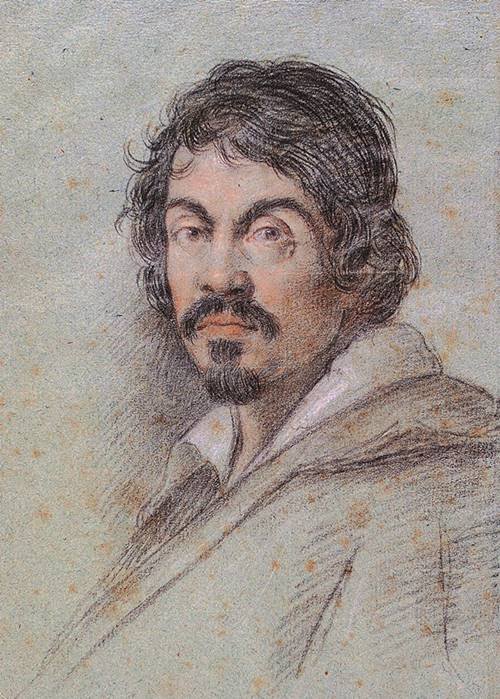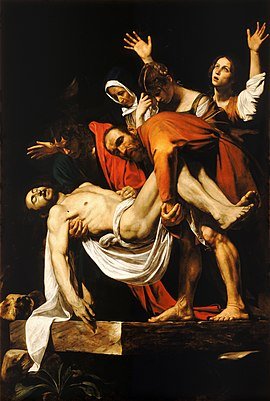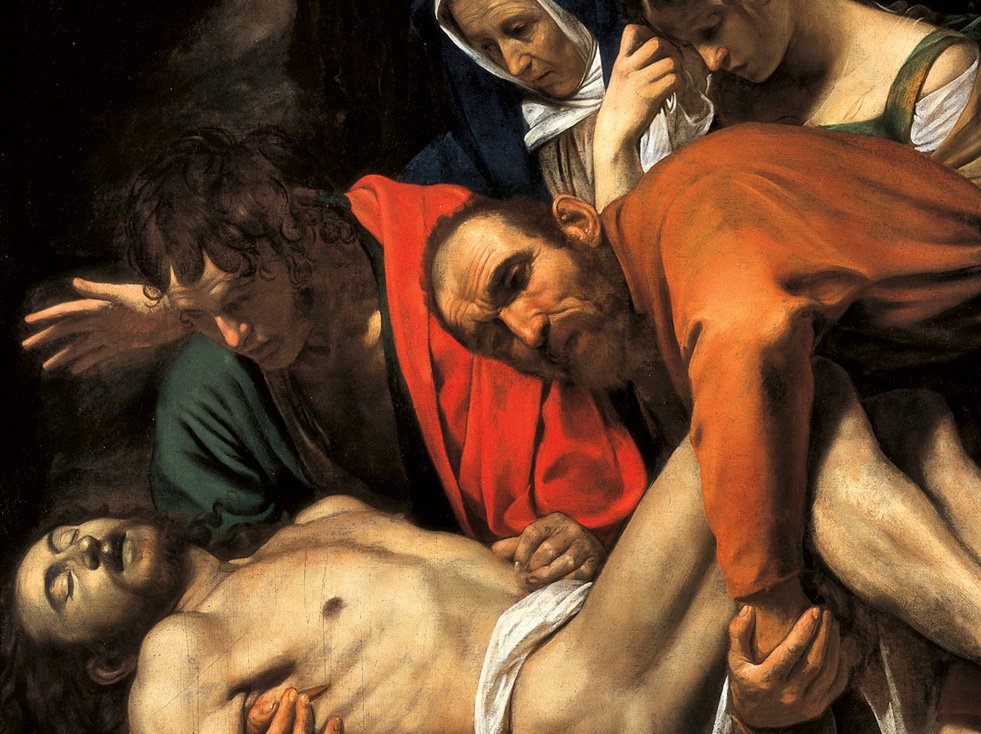Caravaggio’s The Deposition is a profound and moving masterpiece that exemplifies the artist’s unique ability to merge raw emotion with dramatic realism.
This Baroque painting captures the sorrowful moment when Christ’s lifeless body is lowered into the tomb, surrounded by mourners.
With its intense chiaroscuro and emotional depth, The Deposition stands as one of Caravaggio’s most iconic works and a highlight of the Vatican Museums’ collection.
About Caravaggio
Michelangelo Merisi da Caravaggio (1571–1610) was a revolutionary artist whose innovative approach to light and realism transformed Baroque art.

Born in Milan, Caravaggio developed his career in Rome, where he became known for his dramatic use of chiaroscuro and his ability to portray biblical scenes with unflinching naturalism.
His works often featured ordinary people as models, bringing a sense of humanity and immediacy to his religious subjects. Despite his turbulent life, marked by controversy and conflict, Caravaggio’s influence on the art world remains unparalleled.
About the Painting
The Deposition, also known as The Entombment of Christ, was painted between 1602 and 1604 for the Chiesa Nuova (Santa Maria in Vallicella) in Rome. The composition focuses on Christ’s descent from the cross, with his body supported by Nicodemus and John the Evangelist, while Mary Magdalene, the Virgin Mary, and another figure look on in grief. The dynamic positioning of the figures creates a triangular composition, with Christ’s lifeless body at the center, emphasizing his vulnerability and sacrifice.

Nicodemus, positioned at the base of the composition, bears the physical weight of Christ’s body. His straining muscles and bent knees highlight the corporeal reality of the moment, contrasting with the spiritual gravity of the scene. John the Evangelist’s sorrowful expression and supportive hands underline his role as a close disciple of Christ. Mary Magdalene, identifiable by her flowing hair and emotional intensity, gazes downward in anguish, while the Virgin Mary’s aged and grief-stricken face conveys profound sorrow.
Caravaggio’s use of tenebrism—the stark contrast between light and shadow—heightens the drama of the scene. The light falls directly on Christ’s body, illuminating his wounds and the pallor of death, while the surrounding figures are partially cloaked in shadow, drawing the viewer’s attention to the central figure. The stone slab at the bottom of the composition subtly extends into the viewer’s space, creating an almost tangible connection between the sacred event and the observer.
Caravaggio’s decision to portray Christ with such unidealized realism was groundbreaking for its time. The limp posture, exposed wounds, and lack of divine glow emphasize Christ’s humanity, making the painting deeply relatable to viewers. This naturalism, combined with the emotional intensity of the mourners, invites the audience to share in the sorrow and reflection of the moment.
History and Significance
This painting was commissioned by the Oratory of St. Philip Neri and intended to inspire devotion among the faithful. Caravaggio’s decision to portray Christ’s body with such raw humanity was groundbreaking, as it deviated from the idealized depictions common in Renaissance art.
The composition’s diagonal lines and dynamic poses guide the viewer’s eye through the scene, emphasizing both the physical weight of Christ’s body and the spiritual weight of the moment. The Deposition became a powerful symbol of sacrifice and redemption, resonating deeply with viewers both in Caravaggio’s time and today.
Where to See It
Today, The Deposition is displayed in the Pinacoteca Vaticana, within the Vatican Museums. It occupies a prominent position among the gallery’s collection of masterpieces, allowing visitors to appreciate its intricate details and emotional resonance. As one of Caravaggio’s most celebrated works, The Deposition is a must-see for art enthusiasts and those seeking to experience the transformative power of Baroque art.
Visitor Tips
To fully appreciate The Deposition, take your time observing the interplay of light and shadow, as well as the realistic expressions of the figures. Guided tours or audio guides can offer additional insights into Caravaggio’s techniques and the historical context of the work, enriching your experience of this extraordinary masterpiece.

